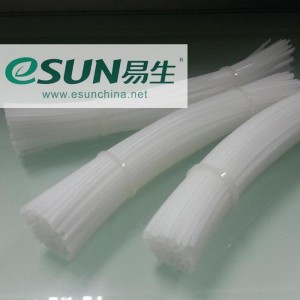When I read about the Esun new extruder cleaning filament, I pointed to my friend excitedly and said, “Hey, Jon! Look! This stuff will clean out my 3D printer!” To which he replied, “Oh.” See, you know that your obscure hobby has hit the big time when businesses start hocking all sorts of stuff that no one else in the world would care about except you.


No longer are 3DP accessories limited to those being hammered together by RepRappers in garages and basements. Instead, they are being developed by businesses to be sold to (semi-)mainstream 3D printer users. Though it is not the definitive source on 3D printing trends, 3D Hubs now has over 5000 3D printers listed on their distributed network, compared to the 789 printers listed about 33 weeks earlier. At this point, after writing for 3DPI for more than a year, I’m less excited by new FFF 3D printers on the market (and, I think, seeing less of them, overall). Instead, I’m getting excited by (and seeing more) refinements in the technology.
If the 3D printing industry were a Yoda bust made with an FFF machine, last year would have been printed with a layer thickness of .4mm and a perimeter speed of 65 mm/s. This year, on the other hand, the industry’s layer height is closer to .2mm, being printed at a speed of 80 mm/s. Our print is starting to have finer details so that we can really start to recognize that the figure we are, in fact, printing is Yoda. Those details are made up of the aforementioned 3DP accessories that really hone the ability of desktop 3DP users.

As 3DS enters the sphere of mainstream manufacturing and existing 3D printer brands enhance existing products, the industry is starting to flesh out. What this means is that the news from here on out may be somewhat quiet, given the relative loudness of 3DP hype from previous years, with occasional huge breakthroughs (3D printed houses, cars, and space objects). To those outside of the community, eyes will roll or be completely vacant, but for those of us within, we’ll scream, “Bring on the cleaning filaments, the specialty build plates, and paste extruders!” This is because we know that, next year, the layer thickness will be less than .1mm in height printed at perimeter speeds of more than 100 mm/s, without losing any quality.
Feature Image Source: Solidoodle


